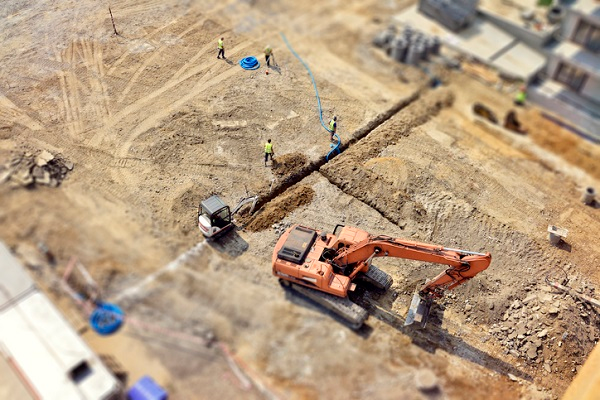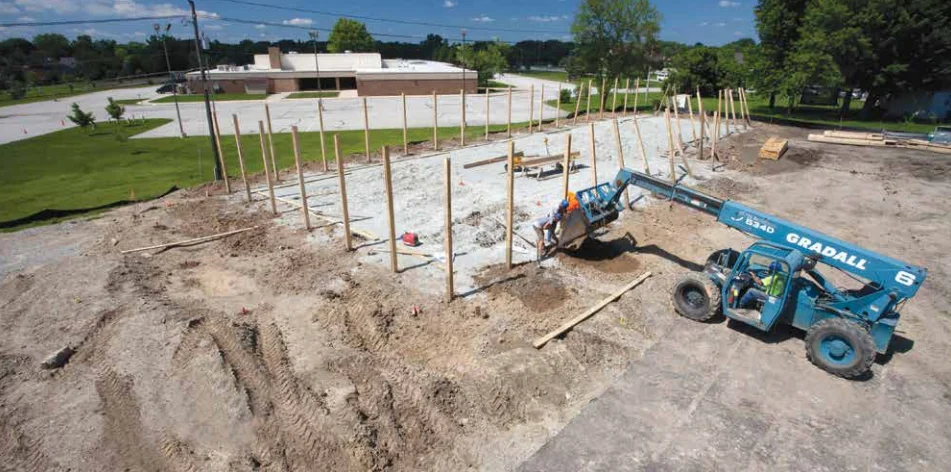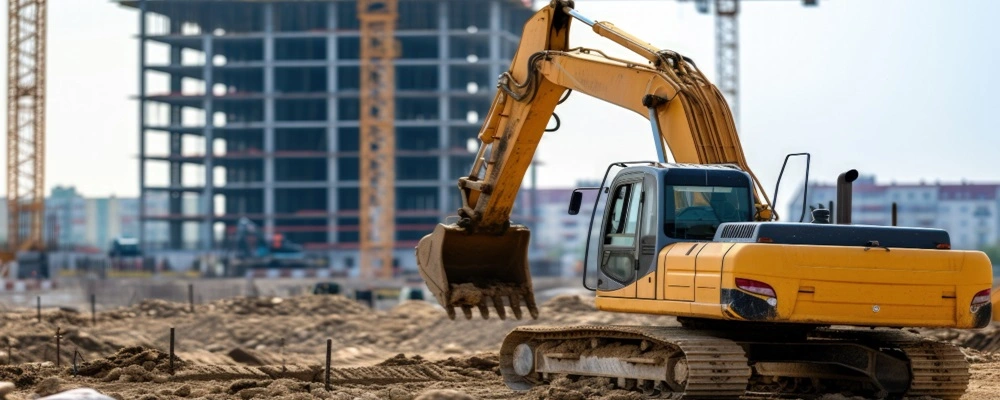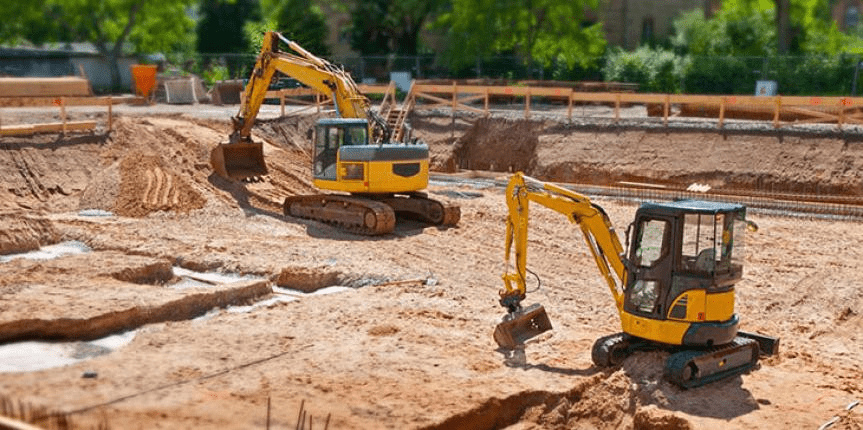Proper drainage is a critical aspect of construction site preparation that can significantly impact the success of a construction project. Without adequate drainage, water can accumulate, leading to soil erosion, foundation issues, and delays in the construction process. Ensuring proper drainage helps maintain the structural integrity of the building, prevents environmental damage, and complies with regulatory requirements.

Understanding Site Preparation
Site preparation is the initial phase of a construction project where the land is readied for building. It involves a series of steps to clear and grade the land, ensuring it is suitable for construction. Key elements of site preparation include surveying, soil testing, and grading to provide a stable base for the new structure.
Construction Site Preparation Process
Steps Involved in Site Preparation
The site preparation process begins with a thorough site survey to determine the existing structures, property lines, and environmental concerns. This is followed by soil testing to assess the soil composition and its suitability for construction. Once the survey and testing are complete, the site is cleared of vegetation, debris, and any other obstructions.

After clearing, the grading process begins to ensure a level surface and proper water runoff. This step is crucial for managing drainage and preventing water accumulation. Heavy equipment, such as bulldozers and graders, are used to shape the land according to the site plan.
Overview of Proper Site Preparation
Proper site preparation involves multiple steps and the use of various techniques and equipment. It is essential to follow a structured approach to avoid major problems during construction. This includes accurately surveying the site, testing soil conditions, grading the land, and installing drainage systems. Each step plays a vital role in ensuring the construction project starts on a solid foundatFion and minimizes potential hazards.
The Role of Proper Drainage in Site Preparation
Ensuring proper drainage is essential in the site preparation process. Without it, water can pool on the construction site, leading to soil erosion, weakening of the foundation, and other structural issues. Proper drainage helps to maintain a dry and stable site, preventing delays and additional costs.

Impact on Structural Integrity and Site Conditions
Proper drainage significantly impacts the structural integrity of a construction project. Poor drainage can cause hydrostatic pressure to build up, leading to water infiltration and damage to the building’s foundation. It can also result in unstable soil conditions, increasing the risk of settling and shifting of the structure over time.
Implementing effective drainage solutions, such as site grading and the installation of retention ponds, ensures the construction site remains stable and safe for building activities. By addressing drainage early in the site preparation process, construction projects can avoid costly repairs and ensure a longer lifespan for the new structure.
Key Steps to Ensure Proper Drainage
Achieving proper drainage in site preparation involves several crucial steps to ensure the construction site is adequately equipped to handle water runoff and prevent related issues. The key steps include thorough site surveying, soil testing, effective site grading, and the installation of appropriate drainage systems.
Site Surveying and Soil Testing
Importance of Site Surveying
Site surveying is a fundamental step in the site preparation process. It involves measuring and mapping the land to determine the topography, existing structures, property lines, and any potential obstacles. Accurate site surveying is crucial for planning the layout of the construction project and identifying the natural flow of water on the site. This information is vital for designing an effective drainage system that accommodates the site’s unique characteristics.
Soil Testing for Determining Soil Composition and Conditions
Soil testing is equally important as it provides critical information about the soil composition, including its type, density, and moisture content. These factors influence the soil’s ability to support the construction structure and its drainage capacity.
Soil tests help in determining the need for soil amendments or stabilization measures to ensure a solid foundation. By understanding the soil conditions, construction planners can design drainage systems that effectively manage water runoff and prevent erosion.
Site Grading and Water Flow Management
Grading Process and Its Role in Water Runoff Management
The grading process involves reshaping the land surface to create a slope that directs water away from the construction site. Proper grading is essential for managing water runoff and preventing water from pooling around the foundation. This step helps to minimize the risk of erosion and structural damage caused by standing water. Heavy equipment like bulldozers and graders are used to achieve the desired slope and contour of the site.
Ensuring a Level Surface for Water Drainage
Ensuring a level surface is crucial for effective water drainage. A well-graded site will have a gentle slope that facilitates the natural flow of water away from the construction area. This not only protects the foundation but also helps in maintaining the overall stability of the site. Proper grading ensures that water is directed to designated drainage areas, such as retention ponds or storm drains, thus preventing water-related issues during and after construction.
Installing Drainage Systems
Types of Drainage Systems
There are various types of drainage systems used in construction site preparation, including surface drainage and subsurface drainage. Surface drainage involves the use of ditches, swales, and gutters to channel water away from the site. Subsurface drainage, on the other hand, includes the installation of perforated pipes and drain tiles below the ground to manage water that percolates through the soil.
Installation Process and Best Practices
The installation process of drainage systems involves several steps. First, a detailed drainage plan is created based on the site survey and soil testing results. Next, trenches are dug according to the plan, and drainage pipes or tiles are laid out.

Proper backfilling is essential to ensure the stability and effectiveness of the drainage system. Best practices include using high-quality materials, ensuring proper slope for the drainage pipes, and regular maintenance to prevent clogging and ensure long-term functionality. By following these best practices, construction sites can achieve effective drainage, protecting the integrity of the structure and the surrounding environment.
Addressing Environmental Concerns
Environmental considerations play a significant role in drainage and site preparation. Proper management of water runoff is essential to prevent soil erosion, water pollution, and damage to surrounding ecosystems. Implementing environmentally responsible practices ensures compliance with regulations and promotes sustainable construction methods.
Managing Stormwater Runoff
Techniques to Handle Stormwater Runoff
Effective management of stormwater runoff involves several techniques designed to control the flow and quality of water leaving the construction site. One common method is the creation of swales, which are shallow, vegetated channels that slow down water flow and promote infiltration into the ground. Additionally, permeable pavements can be used to allow water to seep through and reduce runoff volume.
Use of Silt Fences and Retention Ponds
Silt fences and retention ponds are vital tools in managing storm water runoff. Silt fences are temporary barriers made of porous fabric, placed around the construction site to trap sediment and prevent it from entering waterways.
Retention ponds are designed to collect and store runoff, allowing sediments to settle before the water is slowly released or infiltrated into the ground. These practices help protect nearby water bodies from sedimentation and pollution.
Impact of Hydrostatic Pressure
Hydrostatic pressure occurs when water accumulates in the soil, exerting force against structures such as foundations and retaining walls. This pressure can lead to cracks, water infiltration, and structural damage, posing significant risks to the integrity of the construction project.





